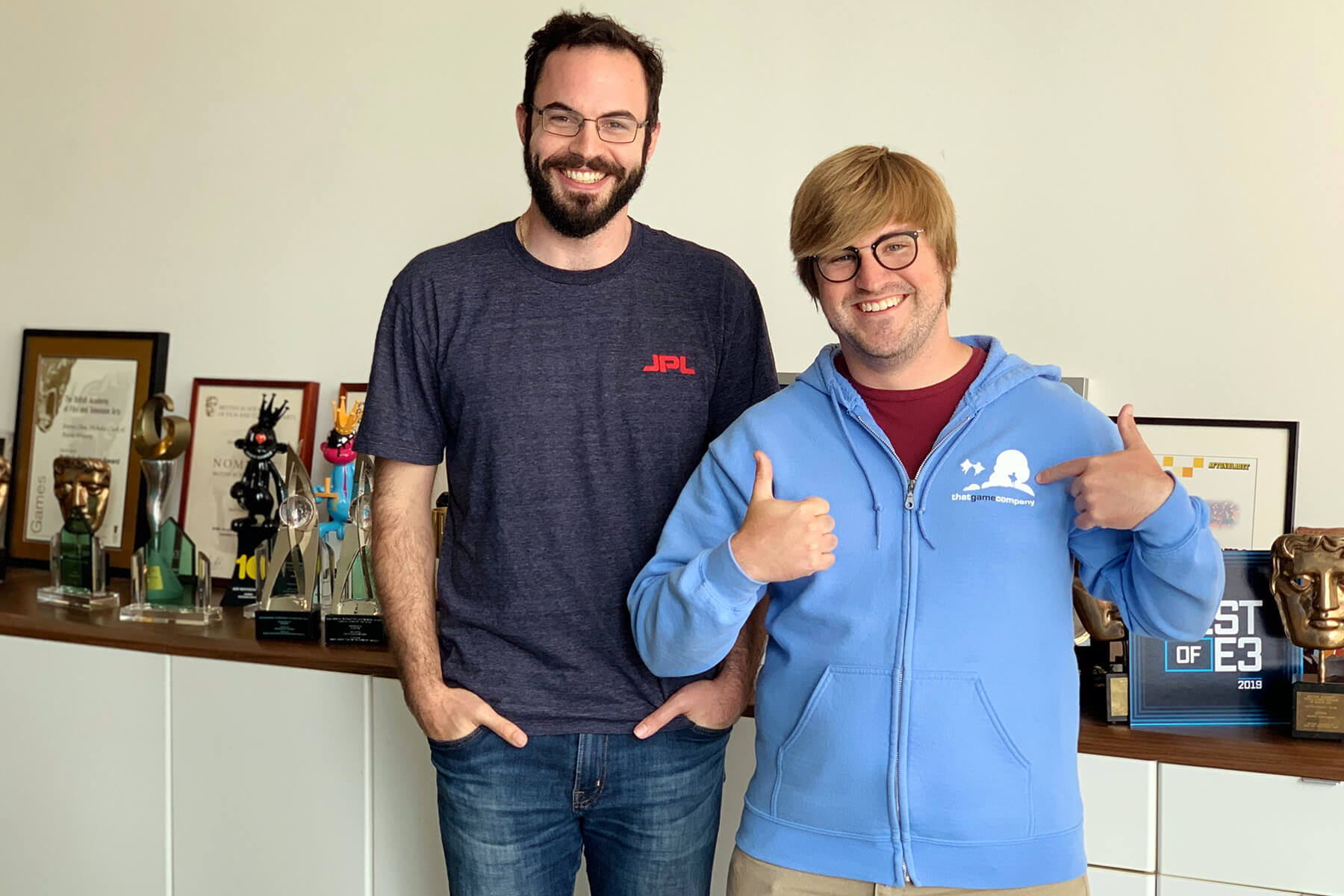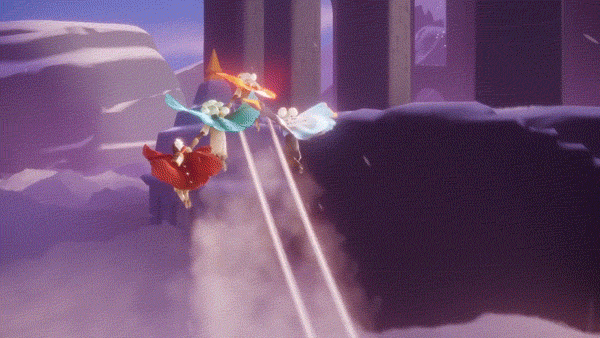In the age of esports, “success” for an online multiplayer game often comes down to how engaging its combat systems are, and how well it can support organized competition. For Kyle Holdwick and John Hughes, two graduates from the BS in Computer Science in Real-Time Interactive Simulation program, the terms for success on the online multiplayer game they’re developing is quite different.
“Hopefully,” Holdwick says, “people play it, feel compassion in the game, then that impacts society to a certain degree, and they’ll be more compassionate in the real world. That’s definitely one of our goals — to make the world a better place.” Sky: Children of the Light, the latest game from thatgamecompany, developer of indie classics Flower and Journey, is incredibly unusual in that regard. Rather than designing the ideal blast radius for a frag grenade or setting up leaderboard ranking systems, Holdwick and Hughes spend their time at the studio asking questions like “How should handholding and hugging work?” or “What emotion should butterflies and manta rays evoke when you interact with them?”

According to thatgamecompany studio head Jenova Chen, Sky: Children of the Light is both a “social adventure” and a “game about giving.” Out now for iOS, the free-to-start game drops players above the clouds in an ancient kingdom with seven realms to explore through flight and friendship. It’s a world Holdwick and Hughes liken to an adventure park, one where altruism itself is the theme. Inhabited by mystical creatures, ancestor spirits, and treasures, players can team up to return light to the darkened sky and restore its constellations. While you technically can play the game by yourself, playing with community — be it friends, family, or strangers — makes things better.
“Pretty much every single system I’ve worked on for the game, I approach it from the angle of ‘doing this together will leave you better off than doing it by yourself,’” Holdwick, who worked on the game’s interactive gameplay systems, says. “A direct example is the energy system in the game. The more energy you have, the higher and further you can fly. But if you’re flying with another person, you actually charge each other. We’re building this game to really encourage people to play together, because you literally can go further together.”

Hughes was tasked with developing the game’s social systems — a unique challenge that meant figuring out how to design for compassionate and positive relationship building. “A big part of the design of our social systems and relationship systems are pulling from and accentuating the best parts of how people interact with each other in real life and really putting that at the front of the experience,” Hughes says. “People coming together as a community, or really being able to express themselves and help each other in a positive way, all of those are good things that we’re taking from the real world and building a world where that’s the focus.”
In the real world, you wouldn’t make friends with a stranger by running up and yelling at them. Regardless, that’s something many aggressive players do decide to do in online games. When you first encounter someone in Sky: Children of the Light, you can only communicate wordlessly, be it through emotes, actions, or gift giving. Once you’ve spent a lot of time together, only then can both players decide to open up chat, an interesting spin on “leveling up” that makes relationships themselves one of the game’s central rewards. “We wanted people to be able to slowly build up trust with each other and build up more powerful, personal relationships,” Hughes says. “A lot of that came from paying attention to how all the iterations of these systems made people feel.”
At DigiPen, the two alumni both worked on racing games. Hughes was the gameplay programmer on the sci-fi multiplayer experience Arc, and Holdwick was the gameplay engineer/producer of the “survival driving” game Nitronic Rush, a game that inspired he and his teammates to create the spiritual successor Distance post-graduation.
Given their prior development experiences, Holdwick and Hughes say one unique aspect of working at thatgamecompany is the enormous emphasis the studio places on emotion. “It’s almost like we start with the emotion,” Holdwick says. Emotion is actually built into the design of the world itself — each of the game’s seven realms is modeled after a stage of life people go through, from whimsical childhood to anxiety, the latter stage portrayed as a “sort of mid-life crisis desert region,” according to Holdwick. “If you’re sitting in the same room, playing the game together with the music on, we actually took the time to synchronize the music between the two devices,” he adds. ”That’s because we realized the power of music in emotion, and if you have conflicting parts of the song playing at the same time on those two devices, it’s not going to have as much of an impact.”
Designing for a specific emotion, and leaving yourself a lot of time to iterate on delivering that emotion, that takes a lot of work.”
According to Hughes, DigiPen helped prepare him for the feelings-first approach thatgamecompany takes during development. “Something I feel like I learned at DigiPen and have continued to internalize here is that it’s really important that when you are designing or creating something new for a game, you have an intent for what players should feel when they experience this,” Hughes says. “So really designing for a specific emotion, and leaving yourself a lot of time to iterate on delivering that emotion, that takes a lot of work.” Given that Sky: Children of the Light will be continually developed, offering daily events and new seasonal content for players, Hughes and Holdwick say they’re excited to continue that hard work.
“It’s really exciting because we’ve done so much iteration, and there are so many ideas people have had here that we’ve tested but didn’t quite come up with a final version yet,” Holdwick says. “So we have a big opportunity to keep providing new experiences and continue growing this safe, positive space for players to interact in.”
